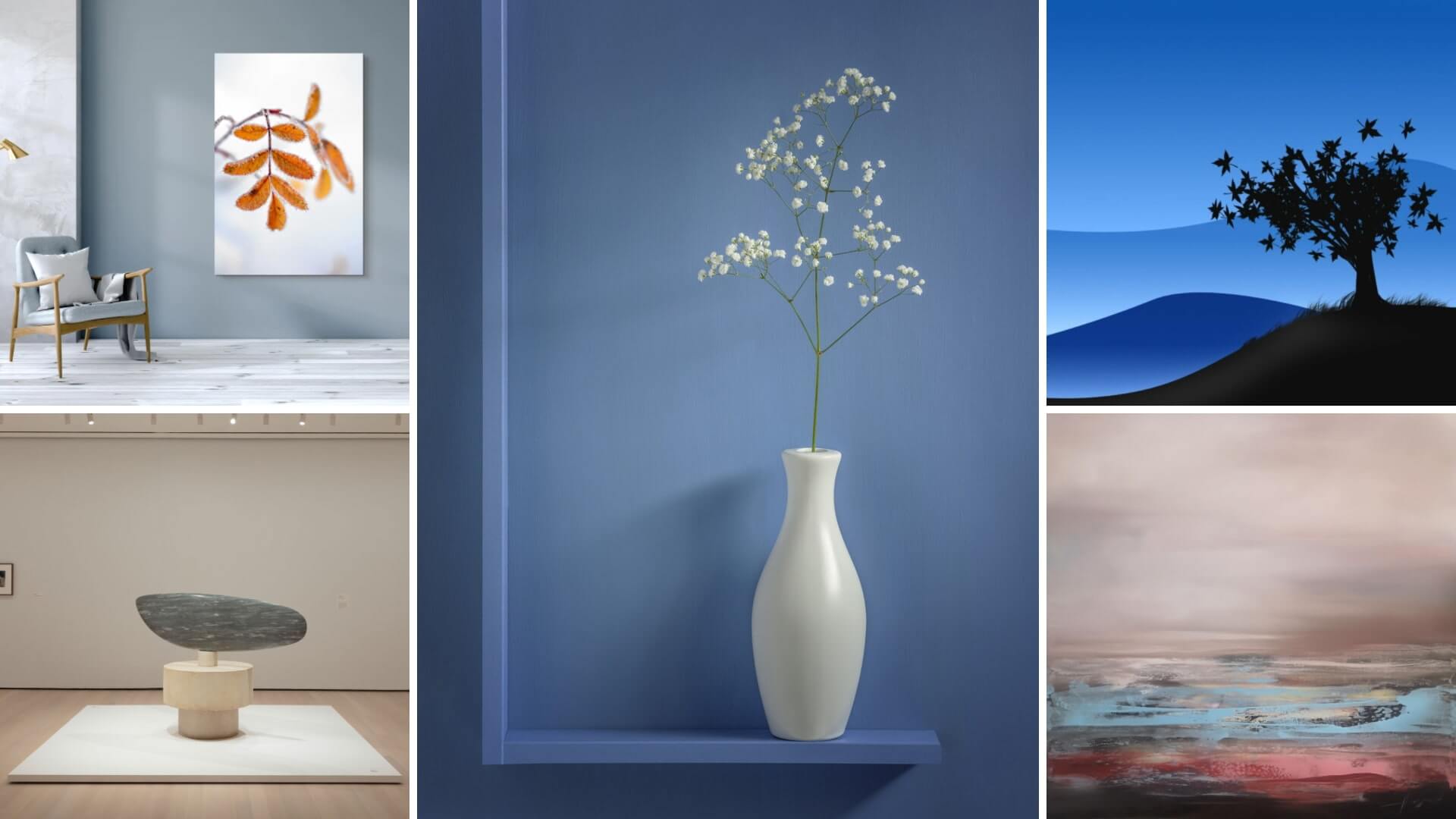Historical polymath Leonardo DaVinci once said, “Simplicity is the ultimate sophistication.” Simplicity, ironically, can be a complex philosophy to analyze. When it comes to art, simplicity is often subjective for both artists and those consuming the art work. What is simplicity in art and composition? How does its function change between artistic mediums? And why do so many great artists strive for simplicity in their work? Let’s find out.
What is Simplicity in Art and Composition?
First, let’s define simplicity
There are many questions when it comes to simplicity. The very first we must answer is, “What is simplicity?” While the term may be difficult to define, looking at the simplicity definition will give us an understanding of how it is used in art.
SIMPLICITY DEFINITION
What is simplicity in art?
In art, simplicity is the philosophy and practice of creating only what is necessary within a work of art. Simplicity depends greatly on both the artist and what they are exploring or expressing through their medium. The artist must decide what is absolutely necessary within their work and what is not. By discarding what is unnecessary, the artist strives for simplicity. Simplicity should not be mistaken for simplistic. Simplistic refers to the use of rudimentary techniques or subjects. Simplicity refers to an artist's intentionality with the content of their work. Simple paintings, photographs, or films can still carry complex meaning.
What is simplicity in art used for?
- Clarifying a message
- Engaging an audience
- Distilling sophisticated concepts
For a deep dive into all the elements of composition, download our FREE Ebook: Elements of Composition in Art, Photography & Film.
Free downloadable bonus
FREE Download
The Complete Guide to Composition Elements
When you master composition, you master the ability to tell a story, create a mood or deliver a message in a single image. Download our FREE e-book that covers the various elements of composition and the relevant techniques you can use to arrange, and compose the perfect image.
What is Simplicity in Art Used For?
Simplicity in Minimalism
It would be difficult to discuss simplicity in art without talking about Minimalism. Minimalism, the mid-twentieth century art movement, is characterized by its simplicity in concept and design.
Frank Stella • Simplicity art
Minimalism was very much a response to the movement of Abstract Expressionism that came before it. Abstract Expressionists such as Jackson Pollock and Mark Rothko saw art as an opportunity for unfiltered expression from the artist.
Minimalists thought very differently. They believed simplicity was to strip away any forced meaning or expression. Simplicity in art meant creating art to be its own identity, not what we impress up on it. Check out this video by Vox of the impact of Minimalism on the art world.
Why these all-white paintings are in museums • Simplicity art explained
To recap, Minimalists leaned more toward the use of simplicity to present art not as something to reflect reality or express oneself through, but rather as its own objective entity. Frank Stella, one of the trailblazing artists of Minimalism, described the work of Minimalism simply, “What you see is what you see.”
The impact of Minimalism reached for past the medium of paint. Soon, artists of all kinds began looking at their work differently. They asked themselves what can be stripped away to add more to their work.
Related Posts
What is Simplicity in Art Good For?
Clarify your message
Although the Minimalists utilized simplicity to move away from meaning in their art, visual artists such as photographers build on simplicity to clarify the meaning of their work.
Photography is a medium in which a story, concept, or message is communicated to a viewer through a single image. A way to clarify this message to the viewer is by utilizing simplicity in photographic compositions.
Lighting for street photography • Simplicity photography
Simplicity aims to strip a photograph of any unnecessary visual elements. What is considered unnecessary? Whatever takes away or does not add to the message that you are trying to communicate.
What remains is only the essential.
Simplicity Photography Principles
Engage an audience
Simple compositions can clarify what you are trying to communicate to a viewer or audience. It will inherently engage them more deeply into your work. When a viewer is curious about what you are expressing, yet the message is more accessible because it is expressed through simple compositions, they become drawn in.
When the message is expressed through simple compositions, it becomes more accessible and the audience can be drawn in.
This is the philosophy of renowned cinematographer Gordon Willis.
As the cinematographer of iconic films such as The Godfather and Annie Hall, Willis found that simplicity is a criminally under utilized philosophy when it comes to composing a frame.
Gordon Willis • Simplicity photography
Film is a medium in which stories are told through the succession of images. If the majority or all of the images within a film are compositionally complex, audiences are likely to be disengaged from the amount of bandwidth it takes to process each scene, let alone the film.
Simplicity in cinematography allows sophisticated themes, narratives, or characters to be more digestible to an audience leaving them more immersed and engaged in the film.
A great example of simple cinematography that perfectly complements a sophisticated story is Blade Runner 2049, one of Denis Villeneuve's best films.

Blade Runner 2049 • Simplicity images
Villenuve’s collaboration with iconic cinematographer Roger Deakins resulted in simple compositions that created the deeply beautiful and immersive world Blade Runner 2049.

Blade Runner 2049 • Examples of simplicity in photography
Cinematographers are tasked with the responsibility of using light and composition to tell a story. Reducing any elements in their compositions that do not contribute to a film’s story, world, characters, or themes will make each and every shot of a film more effective at engaging an audience.
Related Posts
What is Simplicity in Art
How to create simplicity
Simple, of course, does not necessarily mean easy. Composing simple shots can actually be challenging in such a complex world. But there are various compositional techniques that can help you incorporate simplicity into your work. To begin, let's take a look at a few techniques by photographer David Dixon that he uses to incorporate simplicity into his own work.
How to Improve your Photography • Simplicity photography
Know your subject
To recap, having a clear subject or focus that embodies the message you are conveying will help you compose simpler photographs.
Fill the Frame
Filling the frame will allow your point of interest to take up most of your frame and remove any distractions from your shot. This can be incredibly impactful when shooting portraits.
Use negative space
Negative space is also an incredible technique to use that simplifies a composition. It can declutter an image and leave room in the composition for the eye to rest.
The result of simplicity are compositions that are not only beautiful but effective at communicating with others through your medium. In a world filled with ever increasing complexity, human beings innately desire simplicity and art is no exception.
Up Next
Roger Deakins Cinematography Tips
When it comes to film and cinematography, few cinematographers are better at using simplicity to tell complex stories than Roger Deakins. Not only does Deakins implement simplicity into his compositions, but his lighting as well. Check out the techniques Deakins uses to accomplish this in our next article.
Up Next: Tips from Deakins →
Share your vision with elegant shot lists and storyboards.
Create robust and customizable shot lists. Upload images to make storyboards and slideshows.

